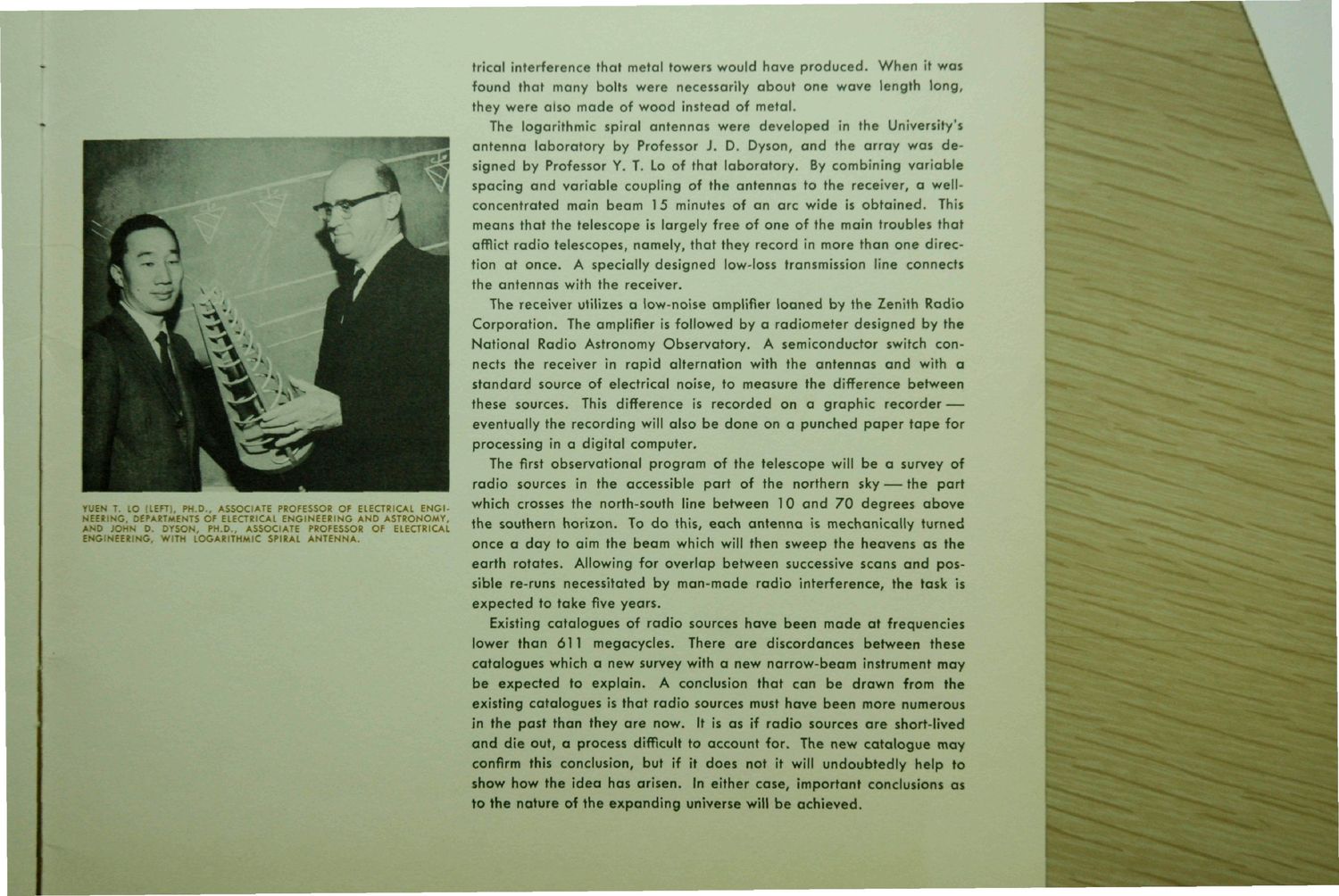| |
| |
Caption: Dedication - Radio Telescope
This is a reduced-resolution page image for fast online browsing.

EXTRACTED TEXT FROM PAGE:
YUEN T. LO (LEFT), PH.D., ASSOCIATE PROFESSOR OP ELECTRICAL ENGINEERING, DEPARTMENTS OF ELECTRICAL ENGINEERING AND ASTRONOMY, AND JOHN D. DYSON, PH.D., ASSOCIATE PROFESSOR OF ELECTRICAL ENGINEERING, WITH LOGARITHMIC SPIRAL ANTENNA. tflcol interference that metal towers would have produced. When It was found that many bolts were necessarily about one wave length long, they were also mad* of wood instead of metal. The logarithmic Spiral antennas were developed in the University's antenna laboratory by Professor J. D. Dyson, and the array was designed by Professor Y. T. Lo of that laboratory. By combining variable spacing and variable coupling of the antennas to the receiver, a wellconcentrated main beam 15 minutes of an arc wide Is obtained. This means that the telescope is largely free of one of the main troubles that afflict radio telescopes, namely, that they record in more than one direction at once* A specially designed low-loss transmission line connects the antennas with the receiver. The receiver utilizes a low-noise amplifier loaned by the Zenith Radio Corporation. The amplifier is followed by a radiometer designed by the National Radio Astronomy Observatory. A semiconductor switch connects the receiver in rapid alternation with the antennas and with a standard source of electrical noise, to measure the difference between these sources. This difference is recorded on a graphic recorder — eventually the recording will also be done on a punched paper tape for processing in a digital computer. The first observational program of the telescope will be a survey of radio sources in the accessible part of the northern sky — the part which crosses the north-south line between 10 and 7 0 degrees above the southern horizon. To do this, each antenna is mechanically turned once a day to aim the beam which will then sweep the heavens as the earth rotates. Allowing for overlap between successive scans and possible re-runs necessitated by man-made radio interference, the) task is expected to take five years. Existing catalogues of radio sources have been made at frequencies lower than 611 megacycles. There are discordances between these catalogues which a new survey with a new narrow-beam instrument may be expected to explain. A conclusion that can be drawn from the existing catalogues is that radio sources must have been more numerous in the past than they are now. It is as if radio sources are short-lived and die out, a process difficult to account for. The new catalogue may confirm this conclusion, but if it does not it will undoubtedly help to show how the idea has arisen. In either case, important conclusions as to the nature of the expanding universe will be achieved.
| |